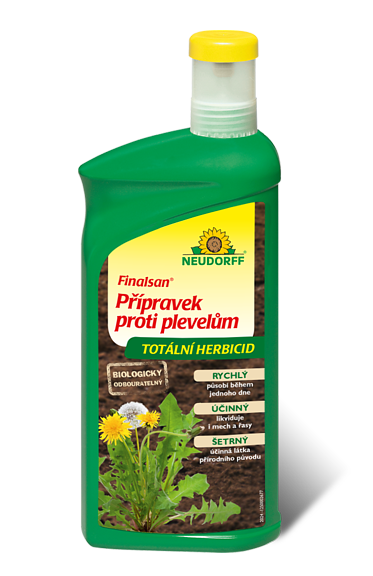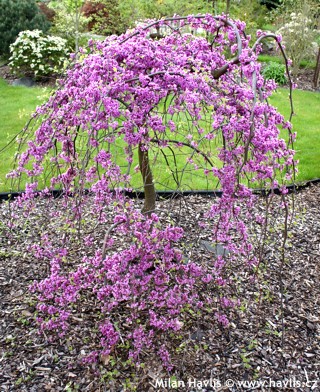Cercis canadensis 'LAVENDER TWIST'® ('Covey') weeping redbud
Cercis
Eastern redbud is a lovely, deciduous, small tree or a large shrub where the word “love” is the key feature. Why? Because its leaves are in a perfect shape of a heart that we are used to drawing as an icon. Moreover, Forest Pansy variety has burgundy red to deep burgundy brown foliage.
Lavender Twist® is a fantastic variety of eastern redbud with weeping, slightly twisted branches. With age the crown makes a unique shape comparable to some Japanese maples. Leaves are large, mid green, typically heart-shaped. Small, purple-pink to lavender-pink flowers are produced in abundance every spring and are borne on bare wood on tiny stalks.
Where does this special plant come from? The truth is that no one knows the true origin. However, this plant in very young age was first given as a present by parents to their daughter, Miss Cornelia Covey in 1960´s. She planted it in the front yard where it was discovered after some 30 years by a nurseryman Tim Brotzman, having been tipped off by Charlie and Nancy Hanks. He tried to propagate it and as it was successful he asked Cornelia to sell the rights to him. As she was moving to another house with less property she even agreed with transplanting of the plant to Brotzman Nursery in Ohio, USA. It is her and her plant in the picture below, plus her dog Luke. The plant was later in 1996 registered at the patent office under the name Covey and was granted a protection by a US patent PP10,328 two years after with a commercial name Lavender Twist®.
This redbud grows quite fast: it can make 45-70cm (allegedly even 90 cm!) per year. Pruning is possible to form a nice shape at the end of winter. Do not cut into old wood – badly treated cuts may be infected and the plant may die. Eastern redbud is soil tolerant but does best in moist but well-drained soil. It resents transplanting. Grow it in full sun, sheltered from drying winds, if possible. Fully hardy to approx. -30°C (USDA zone 5).
Last update 16-01-2010.
Goods are shipped all over Europe. For Russia and U.K. and for further details please read about SHIPPING OPTIONS HERE.
Are you interested in a serious discount for orders NOV-FEB? Check your options here.
THE PRICES INCLUDE VAT of 15%. For quick conversion you can use 1 CZK = approx. 0.04 EUR
- STANDARD QUALITY - Plants of this group are 1st class quality with number of branches and overall density adequate to their size and age, considering they were container grown.
- DE LUXE QUALITY - This label guarantees a luxurious quality of manually selected plants that, compared to their height and age, are exceptionally dense and beautiful.
- EXTRA - These plants are usually mature and bigger specimens with exceptional overall appearance.
- STANDARD (as described in the plant form) means a tree with a trunk of 190-210 cm and a crown at the top, unless specified differently. The commercial size for trees is their girth measured in the height of 1m from ground.
- HOBBY - These plants are of the same quality as our standard-quality plants but younger and therefore cheaper.
- SHRUB - a woody plant with branches growing bushy from the ground level.
- HALF-STANDARD or MINI-STANDARD - a small tree with shorter trunk, its size is usually specified.
- FEATHERED - These are trees with branches growing already from the base of the trunk and up along the stem.
- GRASSES and PERENNIALS - Sizes given usually read the diameter of the pot or the clump, as specified.








































